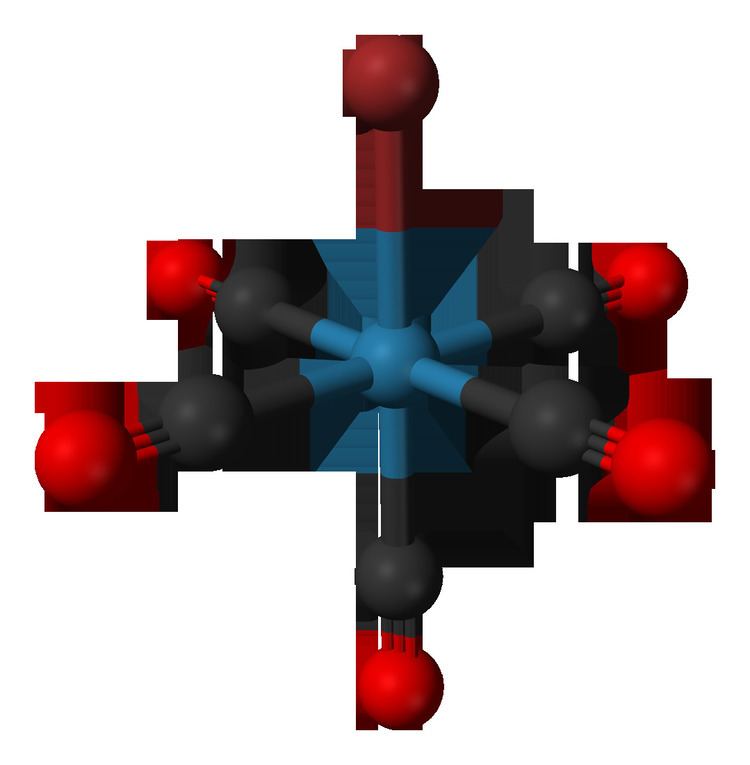Formula Re(CO)5Br Appearance colorless | Molar mass 406.16 g/mol | |
 | ||
Bromopentacarbonylrhenium(I) is an inorganic compound of rhenium, commonly used for the syntheses of other rhenium complexes.
Contents
Preparation
Bromopentacarbonylrhenium(I) is commercially available. It is also easily and inexpensively synthesized by the oxidation of dirhenium decacarbonyl with bromine:
Re2(CO)10 + Br2 → 2 ReBr(CO)5It was first prepared by the "reductive carbonylation" of rhenium(III) bromide:
ReBr3 + 2 Cu + 5 CO → BrRe(CO)5 + 2 CuBrCopper(I) bromide is a byproduct.
Reactions
Bromopentacarbonylrhenium(I) is a useful intermediate to other rhenium complexes. For example, it reacts with zinc and acetic acid to give pentacarbonylhydridorhenium (ReH(CO)5).
Re(CO)5Br + Zn + HO2CCH3 → ReH(CO)5 + ZnBrO2CCH3It also reacts with tetraethylammonium bromide in diglyme to give [NEt4]2[ReBr3(CO)3)], an important precursor to compounds containing the rhenium tricarbonyl fragment.
Refluxing bromopentacarbonylrhenium(I) in water also provides access to the rhenium tricarbonyl fragment:
ReBr(CO)5 + 3 H2O → [Re(H2O)3(CO)3]Br + 2 COThis route avoids the formation of the tetraethylammonium bromide byproduct when the tetraethylammonium complex is used. This is desirable because the tetraethylammonium bromide is often difficult to remove from reaction mixtures.
